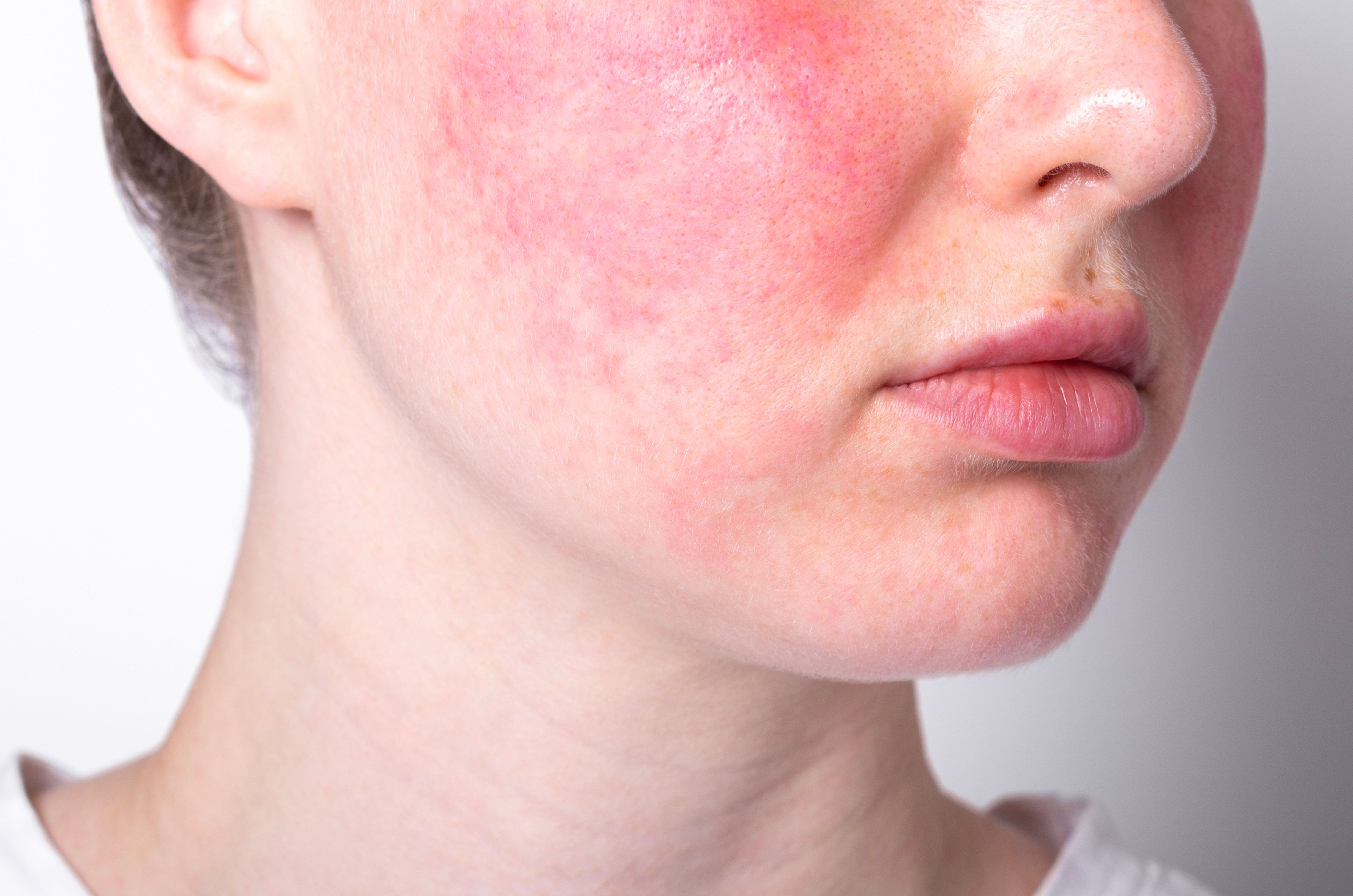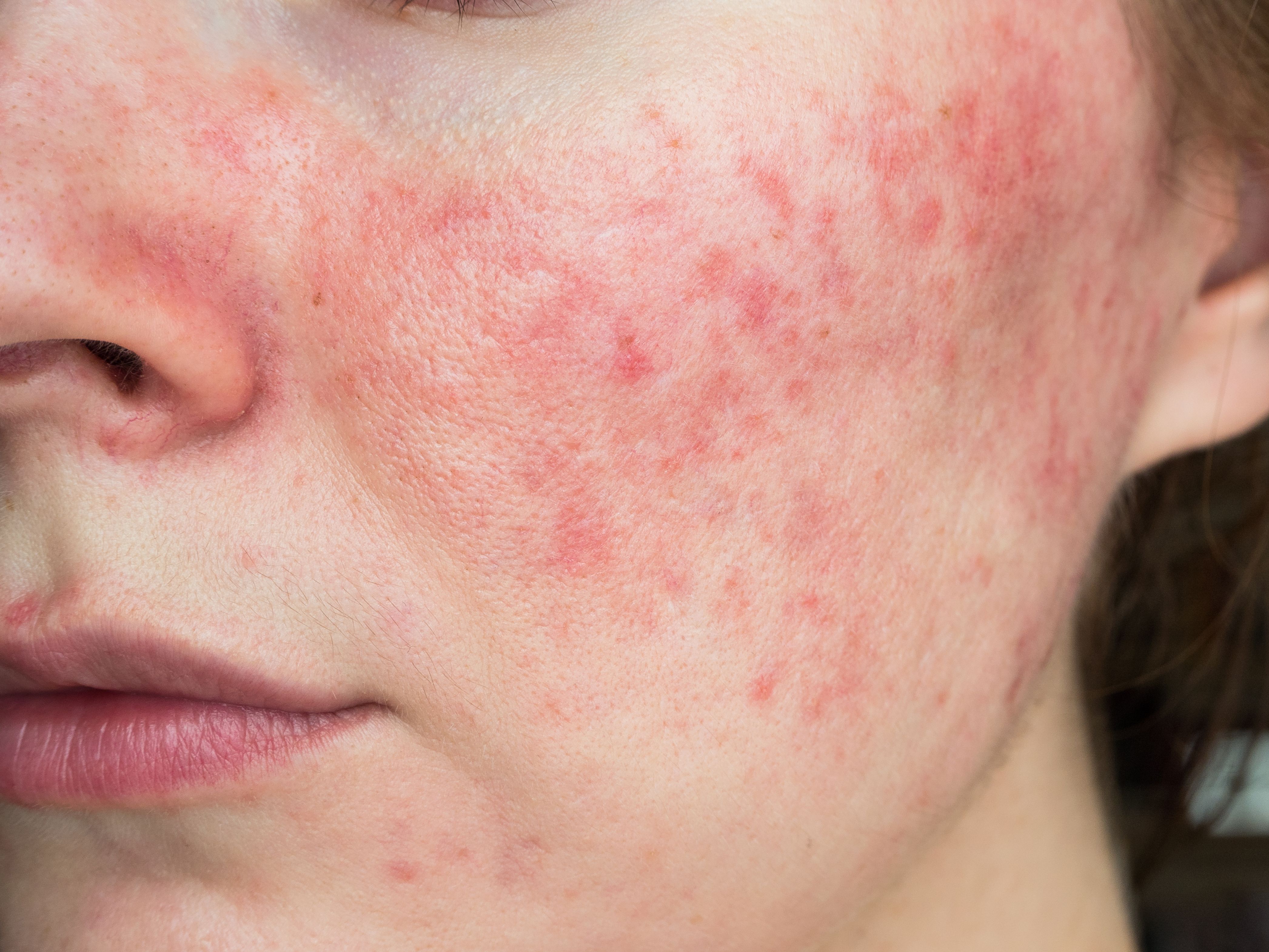- Case-Based Roundtable
- General Dermatology
- Eczema
- Chronic Hand Eczema
- Alopecia
- Aesthetics
- Vitiligo
- COVID-19
- Actinic Keratosis
- Precision Medicine and Biologics
- Rare Disease
- Wound Care
- Rosacea
- Psoriasis
- Psoriatic Arthritis
- Atopic Dermatitis
- Melasma
- NP and PA
- Skin Cancer
- Hidradenitis Suppurativa
- Drug Watch
- Pigmentary Disorders
- Acne
- Pediatric Dermatology
- Practice Management
- Prurigo Nodularis
- Buy-and-Bill
News
Article
Variable-Sequenced Large-Spot KTP and PDL Demonstrate Comparable Efficacy in Rosacea
Author(s):
Researchers compared a variable-sequenced, large-spot 532 nm KTP laser to the 595 nm pulsed-dye laser.
In a comparative study published in the Journal of Cosmetic Dermatology, researchers Nguyen et al found that a variable-sequenced large-spot 532 nm potassium-titanyl-phosphate (KTP) laser and a 595 nm pulsed dye laser (PDL) demonstrated comparable efficacy in the treatment of rosacea.1 Furthermore, the KTP laser demonstrated fewer post-treatment reactions versus the PDL when it came to evaluations of safety.
Vascular-specific lasers, particularly PDL, have proved significantly effective in the treatment of rosacea-associated erythema and telangiectasia, with PDL considered one of the standard treatment options for the condition.2
However, study authors Nguyen et al note that the the high cost associated with PDL acquisition and maintenance has fueled interest in exploring alternative therapies. Compared to PDL, KTP lasers exhibit a larger spot size, higher fluence settings, various pulse shapes, and integrated cryogen cooling.
Researchers conducted the prospective study at the University Medical-Center Hamburg-Eppendorf in Germany, delving into comparing the efficacy, safety, and tolerability of the conventional 595 nm PDL with the novel variable-sequenced, large-spot 532 nm KTP laser.
The study enrolled 45 patients with rosacea. Patients underwent up to 3 treatment sessions at intervals of 6 to 8 weeks and were followed up 6 weeks post-treatment.
The primary endpoint was the improvement of rosacea-associated erythema, quantified using the CIE Lab color space model. Secondary endpoints included assessments by blinded dermatologists, patient-reported outcomes, safety evaluations, and system maintenance.
Results indicated a significant reduction in erythema for both the KTP and PDL treatment groups, with no significant difference observed between them.
Blinded investigators noted improvements in overall appearance, erythema, and telangiectasia post-treatment, without significant variation between the 2 laser modalities.
Patient-reported outcomes revealed a notable improvement in flushing and persistent erythema in both groups, with a slight advantage in secondary symptom improvement observed in the PDL group.
Regarding safety and tolerability, patients treated with the KTP reported lower pain intensity compared to those treated with PDL. Mild-to-moderate swelling and erythema were common post-treatment reactions, with purpuric reactions more frequent in the KTP group. However, no serious adverse effects were reported, and patient satisfaction rates were high in both cohorts.
Maintenance issues were more pronounced in PDL systems, leading to treatment postponements, while the KTP system remained stable throughout the study period.
According to researchers, this is the first known prospective, controlled trial to compare the efficacy, safety and tolerability, and patient satisfaction of KTP to PDL in this indication.
Limitations of the current research include the inclusion of the influence of patients' lifestyle habits, a short interval to follow-up, and undefined optimal parameters for KTP due to its novel nature.
"We conclude by objective analysis of erythema, blinded outcome evaluation, and patients' assessment that the variable-sequenced, large-spot KTP is an effective and safe method to treat rosacea-associated flushing, erythema, and telangiectasia," according to Nguyen et al. "Secondary symptoms of rosacea seem to respond better after PDL then after KTP treatment. By providing lower downtime and fewer adverse events, this laser suggests a superiority to the conventional PDL. Further studies are warranted to evaluate its long-term efficacy and safety and analyze the recurrence rates of rosacea after treatment with both KTP and PDL."
References
- Nguyen L, Dierckxsens C, Kerscher M, Hartjen A, Schneider SW, Herberger K. Rosacea treatment with 532 nm KTP versus 595 nm pulsed dye laser-A prospective, controlled study. J Cosmet Dermatol. April 10, 2024. Accessed April 17, 2024. doi:10.1111/jocd.16300
- Thiboutot D, Anderson R, Cook-Bolden F, et al. Standard management options for rosacea: the 2019 update by the National Rosacea Society expert committee. J Am Acad Dermatol. 2020. Accessed April 17, 2024. doi:10.1016/j.jaad.2020.01.077
Newsletter
Like what you’re reading? Subscribe to Dermatology Times for weekly updates on therapies, innovations, and real-world practice tips.







